Chris Hill
Multi-modal graph neural networks for localized off-grid weather forecasting
Oct 16, 2024Abstract:Urgent applications like wildfire management and renewable energy generation require precise, localized weather forecasts near the Earth's surface. However, weather forecast products from machine learning or numerical weather models are currently generated on a global regular grid, on which a naive interpolation cannot accurately reflect fine-grained weather patterns close to the ground. In this work, we train a heterogeneous graph neural network (GNN) end-to-end to downscale gridded forecasts to off-grid locations of interest. This multi-modal GNN takes advantage of local historical weather observations (e.g., wind, temperature) to correct the gridded weather forecast at different lead times towards locally accurate forecasts. Each data modality is modeled as a different type of node in the graph. Using message passing, the node at the prediction location aggregates information from its heterogeneous neighbor nodes. Experiments using weather stations across the Northeastern United States show that our model outperforms a range of data-driven and non-data-driven off-grid forecasting methods. Our approach demonstrates how the gap between global large-scale weather models and locally accurate predictions can be bridged to inform localized decision-making.
A composable machine-learning approach for steady-state simulations on high-resolution grids
Oct 11, 2022



Abstract:In this paper we show that our Machine Learning (ML) approach, CoMLSim (Composable Machine Learning Simulator), can simulate PDEs on highly-resolved grids with higher accuracy and generalization to out-of-distribution source terms and geometries than traditional ML baselines. Our unique approach combines key principles of traditional PDE solvers with local-learning and low-dimensional manifold techniques to iteratively simulate PDEs on large computational domains. The proposed approach is validated on more than 5 steady-state PDEs across different PDE conditions on highly-resolved grids and comparisons are made with the commercial solver, Ansys Fluent as well as 4 other state-of-the-art ML methods. The numerical experiments show that our approach outperforms ML baselines in terms of 1) accuracy across quantitative metrics and 2) generalization to out-of-distribution conditions as well as domain sizes. Additionally, we provide results for a large number of ablations experiments conducted to highlight components of our approach that strongly influence the results. We conclude that our local-learning and iterative-inferencing approach reduces the challenge of generalization that most ML models face.
A composable autoencoder-based iterative algorithm for accelerating numerical simulations
Oct 07, 2021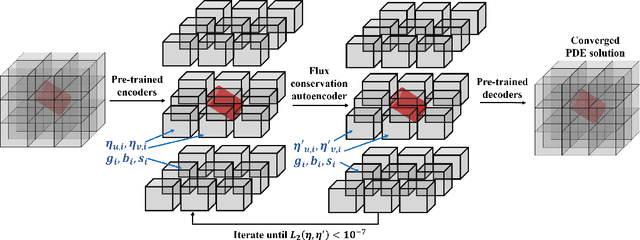



Abstract:Numerical simulations for engineering applications solve partial differential equations (PDE) to model various physical processes. Traditional PDE solvers are very accurate but computationally costly. On the other hand, Machine Learning (ML) methods offer a significant computational speedup but face challenges with accuracy and generalization to different PDE conditions, such as geometry, boundary conditions, initial conditions and PDE source terms. In this work, we propose a novel ML-based approach, CoAE-MLSim (Composable AutoEncoder Machine Learning Simulation), which is an unsupervised, lower-dimensional, local method, that is motivated from key ideas used in commercial PDE solvers. This allows our approach to learn better with relatively fewer samples of PDE solutions. The proposed ML-approach is compared against commercial solvers for better benchmarks as well as latest ML-approaches for solving PDEs. It is tested for a variety of complex engineering cases to demonstrate its computational speed, accuracy, scalability, and generalization across different PDE conditions. The results show that our approach captures physics accurately across all metrics of comparison (including measures such as results on section cuts and lines).
A Latent space solver for PDE generalization
Apr 06, 2021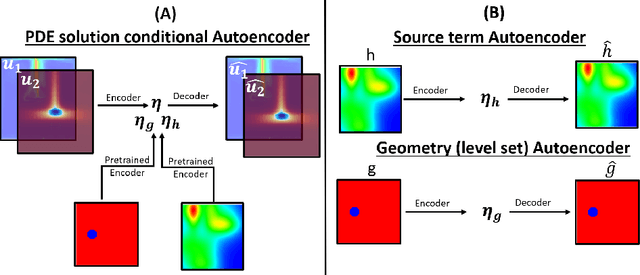
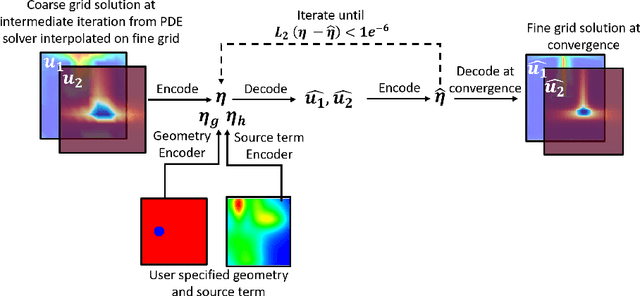
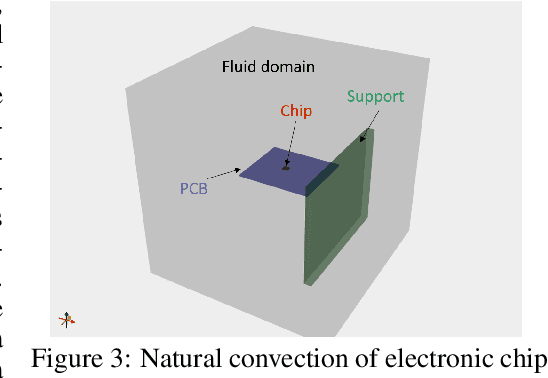
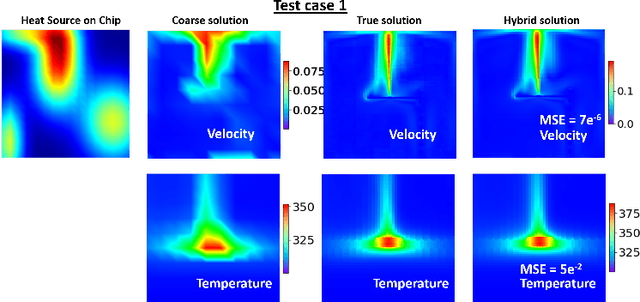
Abstract:In this work we propose a hybrid solver to solve partial differential equation (PDE)s in the latent space. The solver uses an iterative inferencing strategy combined with solution initialization to improve generalization of PDE solutions. The solver is tested on an engineering case and the results show that it can generalize well to several PDE conditions.
DiscretizationNet: A Machine-Learning based solver for Navier-Stokes Equations using Finite Volume Discretization
May 17, 2020



Abstract:Over the last few decades, existing Partial Differential Equation (PDE) solvers have demonstrated a tremendous success in solving complex, non-linear PDEs. Although accurate, these PDE solvers are computationally costly. With the advances in Machine Learning (ML) technologies, there has been a significant increase in the research of using ML to solve PDEs. The goal of this work is to develop an ML-based PDE solver, that couples important characteristics of existing PDE solvers with ML technologies. The two solver characteristics that have been adopted in this work are: 1) the use of discretization-based schemes to approximate spatio-temporal partial derivatives and 2) the use of iterative algorithms to solve linearized PDEs in their discrete form. In the presence of highly non-linear, coupled PDE solutions, these strategies can be very important in achieving good accuracy, better stability and faster convergence. Our ML-solver, DiscretizationNet, employs a generative CNN-based encoder-decoder model with PDE variables as both input and output features. During training, the discretization schemes are implemented inside the computational graph to enable faster GPU computation of PDE residuals, which are used to update network weights that result into converged solutions. A novel iterative capability is implemented during the network training to improve the stability and convergence of the ML-solver. The ML-Solver is demonstrated to solve the steady, incompressible Navier-Stokes equations in 3-D for several cases such as, lid-driven cavity, flow past a cylinder and conjugate heat transfer.
 Add to Chrome
Add to Chrome Add to Firefox
Add to Firefox Add to Edge
Add to Edge